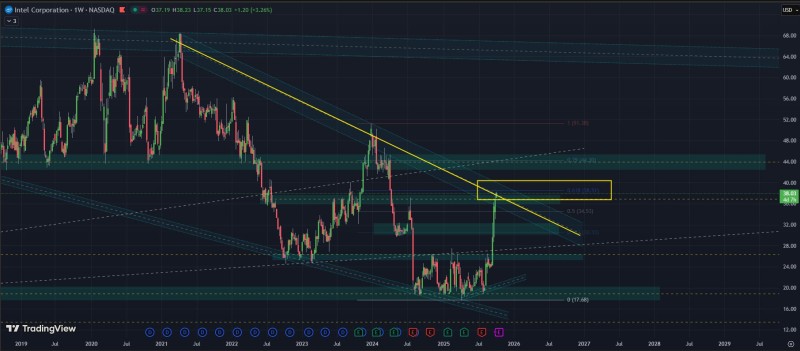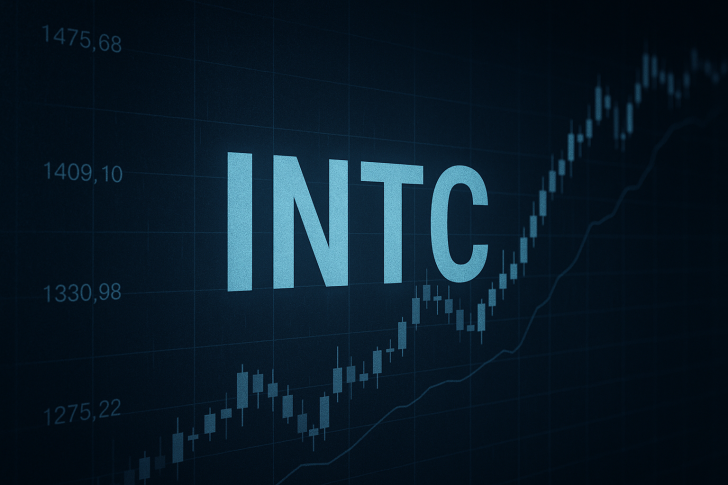Intel has staged an impressive comeback over the past month, climbing more than 60% in under four weeks. But now the chip giant faces a moment of truth. As the stock pushes toward $38.5, multiple technical indicators are flashing warning signs that this rally might be running out of steam.
A Strategic Exit
Trader MD_DomPablo recently shared his game plan: after buying near $20.5 post-earnings, he's now trimming his position at $38.5. The logic is straightforward. Looking at the weekly chart, Intel's still stuck in a longer-term downtrend, the price is bumping into that descending trendline that's been holding it down since 2021, and it lines up perfectly with the 61.8% Fibonacci retracement—a spot where rallies often lose momentum.

The weekly timeframe tells an interesting story. That yellow trendline has been Intel's ceiling for years, consistently rejecting every attempt to break higher. The current $38.5 level isn't random either—it's where the Fibonacci 61.8% retracement sits, a mathematically significant zone that tends to mark the end of corrective bounces. Despite the explosive rally, Intel hasn't actually broken its technical imprisonment yet. Below, there's solid support around $34.50 and further down at $20.50. Above, if the stock somehow punches through, $44.30 becomes the next target worth watching.
Why This Matters
The rally reflects real optimism about Intel's turnaround efforts, its massive manufacturing investments, and its potential role in the AI chip boom. But there's a flip side. Nvidia and AMD aren't standing still—they're eating Intel's lunch in key markets, especially graphics and data center chips. That competitive pressure raises a fair question: is this recovery sustainable, or just a dead cat bounce in a falling stock?
Everything hinges on $38.5. If Intel can blast through with real volume and conviction, we might see a run toward $44 and possibly higher. But if it gets rejected here—which is the higher probability given the technical setup—expect a pullback toward $34, maybe deeper. For anyone thinking long-term, the stock price matters less than whether Intel can actually execute its ambitious roadmap and claw back market share.
 Peter Smith
Peter Smith

 Peter Smith
Peter Smith


